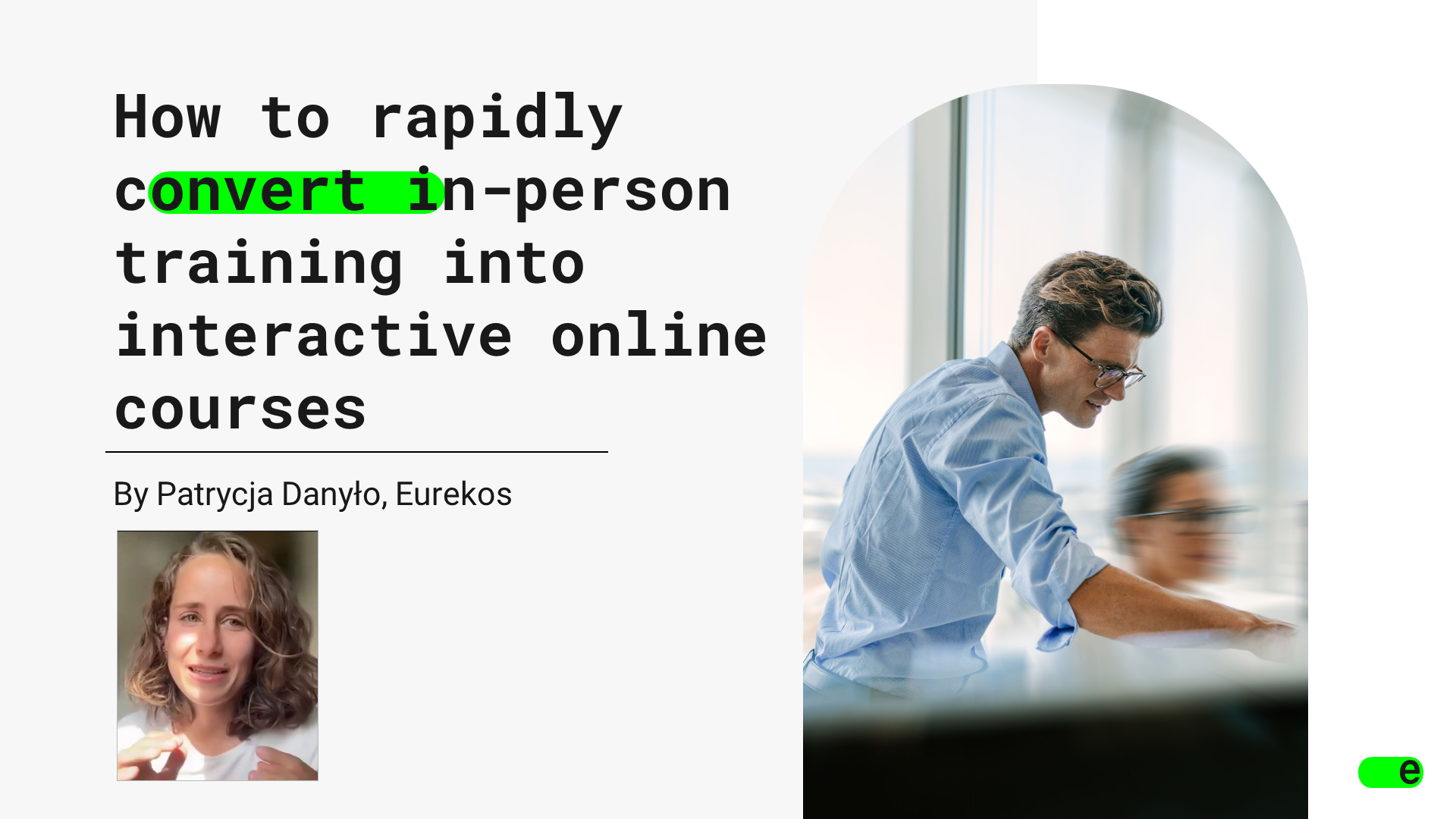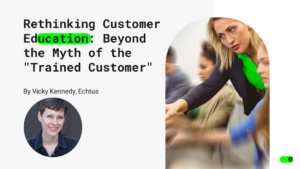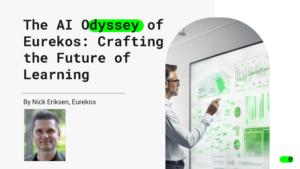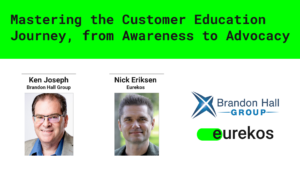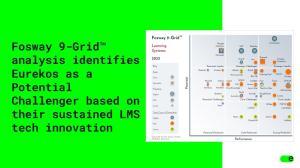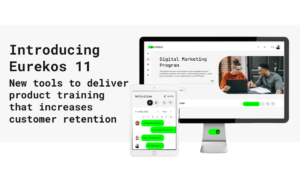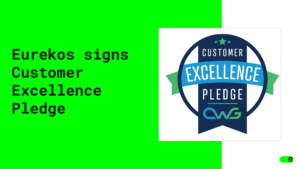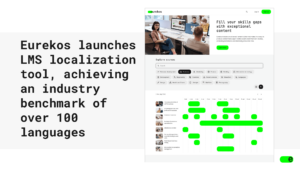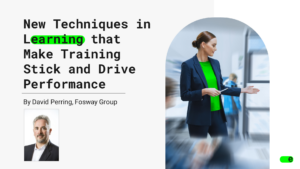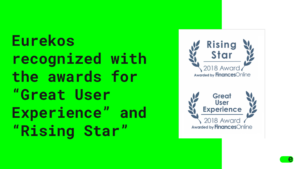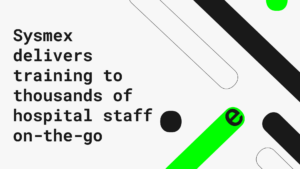By Patrycja Danylo, Eurekos Systems.
For over 20 years, learning industry analysts have told us that eLearning and other types of self-paced learning will replace live in-person training.
They predicted that we will never have to travel somewhere far away to sit in a classroom and listen to an all-day lecture.
But that never happened. Until now, when so many of us are working from remote locations.
eLearning and other types of online training have improved drastically over the years, but only in small increments. Without the right approach and technology, very rarely does it deliver an experience as effective as an in-person class.
The reason why it never replaced in-person training was because it’s usually missing a few crucial elements that make the learning experience more memorable.
- First is the lack of collaborating and networking with other students, which is extremely valuable for immediate and long-term learning.
- The other is the ability of an instructor to engage learners and keep them awake and listening for a long period of time.
- Also, things like workshops, practice exercises, gamification and team projects can be more difficult in self-paced learning.
But now, we’re all in a situation where we have no choice but to train online. We can’t be face to face for a while. We can’t travel. We have to consume training online.
Fortunately, the technology is there to replace the in-person experience. Learning systems like Eurekos have integrated course authoring, so it’s easy for almost anyone to convert in-person training to online courses and include the necessary interactive elements that power in-person classes.
Here’s how you can make the big transition from in-person training to self-paced learning with the same or better outcome than in-person training.
6 Steps to Converting In-person Courses to Interactive eLearning
1. Prioritize existing in-person courses
The first step is always to invest time in prioritizing your existing courses, unless you only have one or two courses to convert.
In most cases, you’ll have a lot of courses and various other important content, but they don’t have the same importance.
Treat this exercise as if you’re a hospital emergency room in a triage situation.
- Determine what’s urgent for your employees, customers or whoever you’re training. What do they need right now? What can wait?
- What’s the fastest content to convert? Three easy short courses may team the same amount of effort as one long course.
- What are the easiest courses to convert to the online format? Some courses demand in-person training, while some are well suited for online.
2. Pick a design framework
The two measuring sticks for good training is whether 1) it sticks and 2) changes the learner. If it’s not retained, then it’s like it never happened. If it doesn’t make them change something, then it didn’t work.
Training that leads to change tends to be persuasive, but also includes fundamental instructional design theories that get through to learners. The online courses need some level of interactive, personalized, modular, and micro. They also need to contain various types of media like video, audio, text, documents and games.
How much of those things can you do in the limited time you have? And do you have the technology to accomplish it easily?
3. Pick the right technology: Authoring and learning management
As mentioned before, technology is critical. If you have a traditional learning management system (LMS) without built-in course authoring, then it will be much more of a challenge. Fortunately, the newer tech like Eurekos has integrated authoring, drag and drop course creation, is not expensive and can be up and running that day.
4. Build and test prototype
Before you go live with anything, quickly convert portions of your most urgent course, and test what you have on a pilot group of 5-10 learners.
- Find out what works and what doesn’t.
- What are they getting stuck on?
- What parts are they having the most fun with?
- What are the most important things they’re learning and how much are they retaining?
- Is the course achieving the primary objective?
All this information can be easily gathered using post-course surveys and focus groups.
5. Build a full course
Once you get feedback and know what course format works, build out an entire course, following these important steps.
Gather content
Fleshing out the entire course will require gathering up additional content like documents, infographics, checklists and possibly shooting video. However, keep in mind that videos do not have to be super high quality and don’t require a professional film crew. Most learners prefer “homemade” video that is not over-scripted and is more natural in appearance. Just make sure it’s easy to hear and easy to see.
Collaborate with your army of subject matter experts (SMEs)
For those who know how to use them, (SMEs) are the secret weapons that turn average content into great content and actually speeds up the entire process, if done right.
The two keys to harnessing the power of SMEs is to 1) get management buy-in about the importance of SMEs spending time developing courses and 2) give the SMEs ownership.
For more information on how to do this, read this blog <insert link to “Using In-House SME’s…” blog>. For a great case study about how a University created 400 new courses in just a few months, harnessing the power of SMEs, read this blog.
Make courses modular so they can be repurposed as microlearning
The biggest difference between in-person and on-demand/facilitated online training is the length of time learners can focus on the content. On-demand is just a few hours at most. It’s crucial to make your content modular, so you can reuse it in microlearning courses or modules.
For instance, a 2 hours course about how to operate a piece of equipment should be broken up into for example 10 “micro-learning” parts so that each is a self-contained lesson and addresses a particular part of operating the piece of equipment. Each learning module can be used in multiple courses, and also re-used for purposes outside the learning platform in webinars, elearning, infographics, etc.
This makes your content far more valuable.
The Eurekos LMS is unique because each module you create is maintained from a single source. This single source can be reused and referenced infinitely and wherever it is, it’s always up-to-date.
6. Launch and market the course
Course rollouts are the most unappreciated part of the process. Course developers too often think, “If we build it, they will come.” But that doesn’t work, so we must build marketing into the process and allocate the time and resources it deserves.
Fast and high quality
Those are the most important, high level steps for converting in-person training into on-demand courses. Of course, the devil is in the details, but if you can follow these general steps, use modern learning technology, and focus your energy on those 6 things, then the results will be good.
It can all be done fast and have the same, if not better outcome than in-person training.
